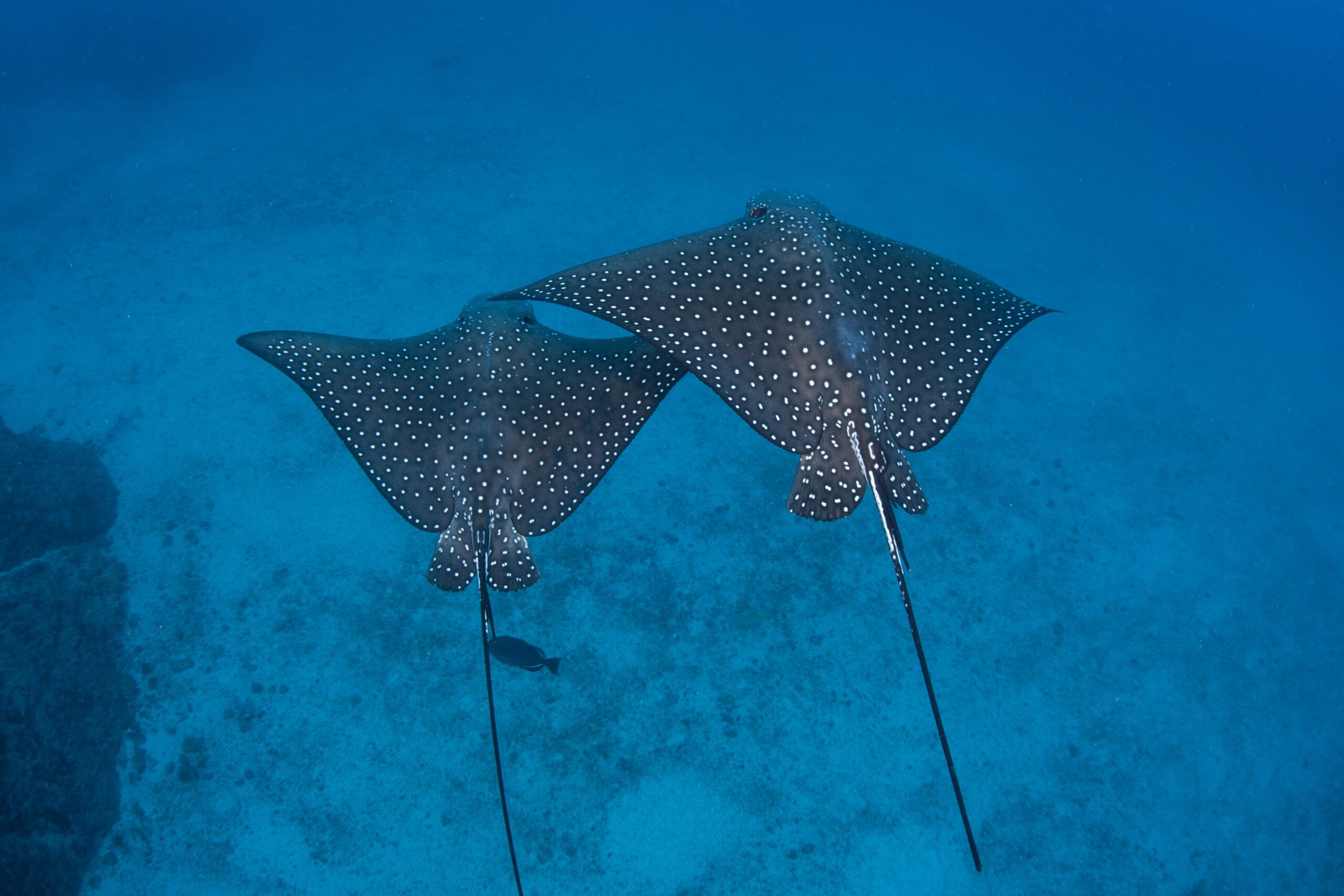Eagle Rays
Eagle Rays
Spotted eagle rays grow to a maximum length of 16.4 feet (5 m), including the tail, and 507 pounds (230 kg). Their wingspan reaches a maximum width of 9.8 feet (3 m) from tip to tip.Spotted eagle rays can be found from the surface to just over 196 feet (60 m) deep.Spotted eagle rays can leap their entire bodies out of the water while swimming close to the surface.Spotted eagle rays have venomous spines on their tails that are used in defense against threats. Which means that they do pose some threat towards you, though not much.Spotted eagle rays have plate-like teeth used to crush their preferred prey, including clams, oysters, sea urchins and shrimp.Its body, or disc, is very angular and thick, with a broad snout that is flat and rounded like a duck’s bill. There are large spiracles located directly behind the eye. The wing-like pectoral fins are broad with pointed tips. Ray has a long whip-like tail reaching lengths of 2½ to 3 times the width of the disc. There are 2 to 6 barbed spines at the base of the tail. It has a single row of broad, flat teeth in each jaw that combine to form upper and lower plates for crushing its shelled prey.
Habitat
Spotted eagle ray occurs across the Indo-Pacific and Eastern and Western Atlantic in tropical and warm temperate waters.Found over the continental shelf from the surface to about 262 feet (80 m) in depth. Spends most of its time in open water, though also found in coastal environments. This ray also will sometimes enter estuaries and may cross ocean basins.
Reproduction of Eagle Rays
Spotted eagle rays live along the open coast in warm waters throughout the world, though they are often associated with coral reefs and sometimes enter protected bays to feed or mate. They are generally considered a coastal species, but the worldwide geographic distribution implies that some individuals must migrate far distances over deep water. It is possible, however, that further genetic study will reveal that spotted eagle rays in different ocean basins (e.g., Atlantic vs. Pacific oceans) are actually different species. Spotted eagle rays reproduce via internal fertilization and give live birth. However, they do not connect to their young through a placenta, like in most mammals. Instead, embryos live off of energy obtained from yolk sacs, and only after the juveniles are able to survive on their own does the mother give birth to her young (1-4 pups per litter). This low reproductive potential, along with their natural rarity, contributes to experts considering spotted eagle rays as ‘near threatened’ with extinction. This species is not directly targeted by commercial fisheries, but it is captured as accidental bycatch in fisheries targeting other species. Furthermore, it is occasionally captured alive to be displayed in public aquariums. Worldwide populations are declining, and careful monitoring is necessary to ensure that conservation measures can be enacted should populations reach threateningly low numbers.
Woo-Hoo you just finished reading abut Eagle Rays! Why don't you go and learn about another type of Ray? Perhaps a Whiptail?


/eagle-ray-504488313-5c6964eb46e0fb0001f93485.jpg)